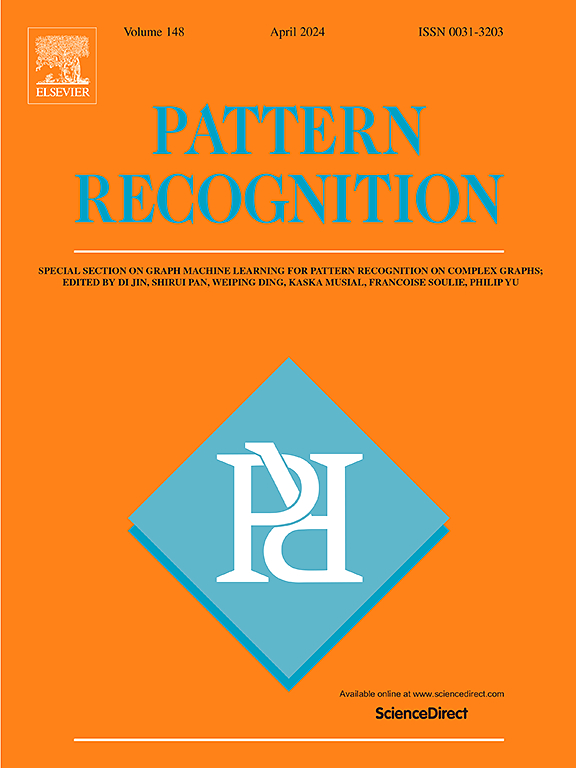Consistency-driven feature scoring and regularization network for visible–infrared person re-identification
IF 7.5
1区 计算机科学
Q1 COMPUTER SCIENCE, ARTIFICIAL INTELLIGENCE
引用次数: 0
Abstract
Recently, visible–infrared person re-identification (VI-ReID) has received considerable attention due to its practical importance. A number of methods extract multiple local features to enrich the diversity of feature representations. However, some local features often involve modality-relevant information, leading to deteriorated performance. Moreover, existing methods optimize the models by only considering the samples at each batch while ignoring the learned features at previous iterations. As a result, the features of the same person images drastically change at different training epochs, hindering the training stability. To alleviate the above issues, we propose a novel consistency-driven feature scoring and regularization network (CFSR-Net), which consists of a backbone network, a local feature learning block, a feature scoring block, and a global–local feature fusion block, for VI-ReID. On the one hand, we design a cross-modality consistency loss to highlight modality-irrelevant local features and suppress modality-relevant local features for each modality, facilitating the generation of a reliable compact local feature. On the other hand, we develop a feature consistency regularization strategy (including a momentum class contrastive loss and a momentum distillation loss) to impose consistency regularization on the learning of different levels of features by considering the learned features at historical epochs. This effectively enables smooth feature changes and thus improves the training stability. Extensive experiments on public VI-ReID datasets clearly show the effectiveness of our method against several state-of-the-art VI-ReID methods. Code will be released at https://github.com/cxtjl/CFSR-Net.
用于可见红外人员再识别的一致性驱动特征评分和正则化网络
最近,可见红外人员再识别(Visible-Infrared person re-identification,VI-ReID)因其实际重要性而受到广泛关注。许多方法提取多个局部特征,以丰富特征表征的多样性。然而,一些局部特征往往涉及模态相关信息,导致性能下降。此外,现有方法在优化模型时,只考虑每批样本,而忽略了之前迭代学习到的特征。因此,同一人物图像的特征在不同的训练期会发生巨大变化,从而影响了训练的稳定性。为了解决上述问题,我们针对 VI-ReID 提出了一种新型的一致性驱动特征评分和正则化网络(CFSR-Net),它由主干网络、局部特征学习块、特征评分块和全局-局部特征融合块组成。一方面,我们设计了一种跨模态一致性损失,以突出与模态无关的局部特征,抑制各模态的相关局部特征,从而有助于生成可靠的紧凑局部特征。另一方面,我们开发了一种特征一致性正则化策略(包括动量类对比损失和动量蒸馏损失),通过考虑历史时间的学习特征,对不同层次的特征学习施加一致性正则化。这有效地实现了平滑的特征变化,从而提高了训练的稳定性。在公开的 VI-ReID 数据集上进行的大量实验清楚地表明,我们的方法与几种最先进的 VI-ReID 方法相比非常有效。代码将在 https://github.com/cxtjl/CFSR-Net 上发布。
本文章由计算机程序翻译,如有差异,请以英文原文为准。
求助全文
约1分钟内获得全文
求助全文
来源期刊

Pattern Recognition
工程技术-工程:电子与电气
CiteScore
14.40
自引率
16.20%
发文量
683
审稿时长
5.6 months
期刊介绍:
The field of Pattern Recognition is both mature and rapidly evolving, playing a crucial role in various related fields such as computer vision, image processing, text analysis, and neural networks. It closely intersects with machine learning and is being applied in emerging areas like biometrics, bioinformatics, multimedia data analysis, and data science. The journal Pattern Recognition, established half a century ago during the early days of computer science, has since grown significantly in scope and influence.
 求助内容:
求助内容: 应助结果提醒方式:
应助结果提醒方式:


